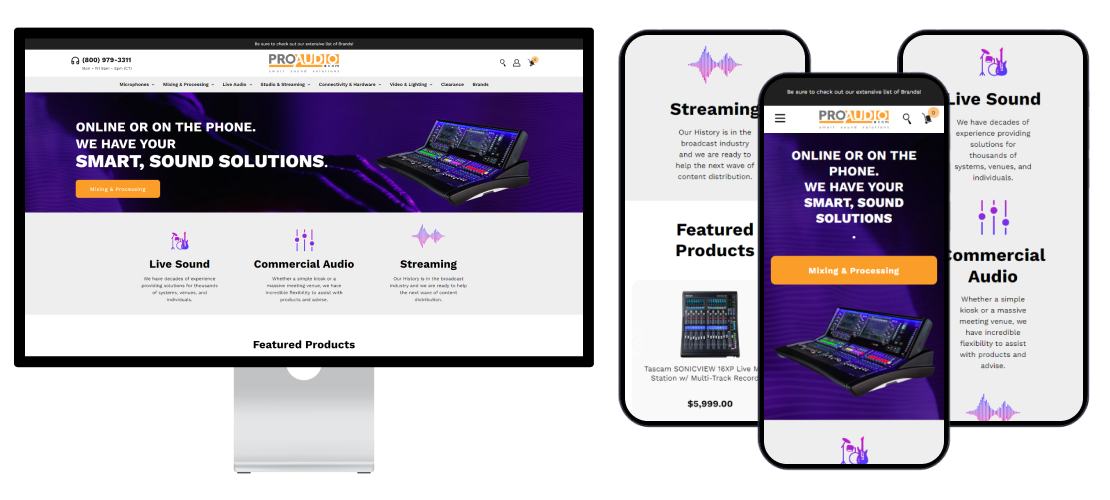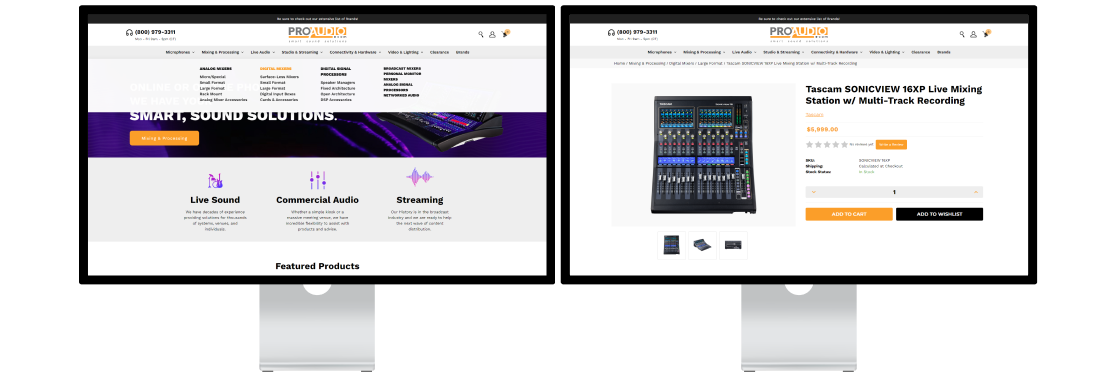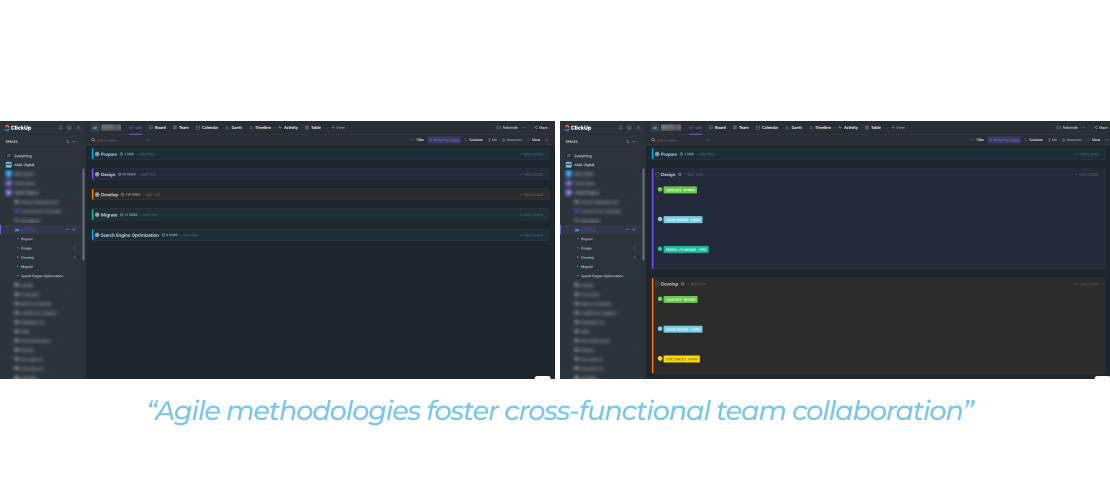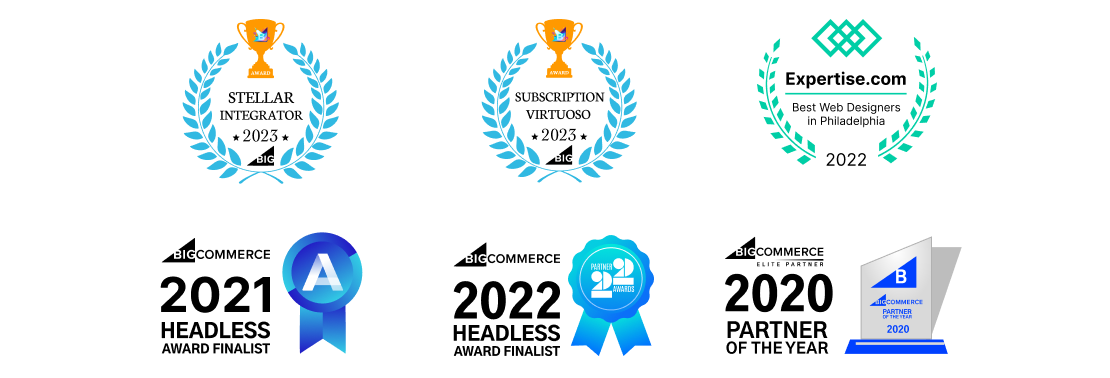
The future of consumer electronics is dazzling, and the driving force behind this revolution lies in innovative web development solutions. Harnessing the power of AI, IoT, and Agile methodologies, we’re about to witness a paradigm shift in the way we interact with everyday devices. Are you ready to dive into the world of consumer electronics web development and discover the secrets behind creating seamless software solutions, intuitive user interfaces, and cutting-edge technologies? Join us on this incredible journey!
Short Summary
- Wisdom InfoSoft is revolutionizing web dev for consumer electronics with embedded software, IoT-enabled apps & system integration services.
- Agile methodologies streamline the development process to create high quality products that meet customer demands.
- AI and Big Data analytics provide valuable insights to help businesses create personalized experiences.
Innovative Web Development for Consumer Electronics

In the realm of consumer electronics development, web development plays a pivotal role in shaping the user experience. Imagine a world where your smart devices, appliances, and mobile apps work together in perfect harmony, creating a connected ecosystem that caters to your every need. The key lies in developing seamless software and hardware solutions, integrating smart devices, and harnessing the power of mobile apps for a truly connected user experience.
Leading companies like Wisdom InfoSoft are pioneering this revolution by offering embedded system software design, product performance optimization solutions, IoT-enabled consumer apps, hardware, and system integration engineering services as part of their consumer electronics solutions. From camera-mounted drones to innovative household appliances, the consumer electronics market is ripe for disruption, and the time has never been better to leverage these advancements for a competitive edge.
Embedded Software Solutions
Embedded software and hardware solutions are the backbone of modern consumer electronics, providing optimized performance and functionality for a wide array of devices. Companies like Wisdom InfoSoft specialize in crafting the perfect blend of GUI and functional applications, as well as firmware, using a suitable technology stack to create a seamless app development process. With their expertise in hardware solutions, they ensure they deliver the best possible integration between software and device components.
The benefits of embedded software solutions are numerous, with product performance optimization being a prime example. Ensuring that your device runs smoothly and without issues, companies like Wisdom InfoSoft are dedicated to delivering a seamless app development process that keeps customer satisfaction at the forefront.
Smart Devices Integration
The integration of smart devices is a game-changer in the world of consumer electronics. Imagine being able to control your smart TV, oven, fridge, thermostat, and washer with a single app on your smartphone, creating a harmonious and interconnected environment. This is made possible through seamless communication and interoperability between various gadgets and appliances, which is at the core of smart devices integration.
With the help of tools like Qt, which offers connectivity libraries for Bluetooth, Bluetooth low-energy, MQTT, NFC, Wi-Fi, and more, developers can create consumer electronics products functional applications that work together in perfect harmony. The possibilities are endless – from setting up a smart home with Google Assistant or Alexa-enabled speakers to enhancing the functionality of everyday appliances – smart devices integration is paving the way for a truly connected world.
Mobile Apps for Consumer Electronics
Mobile apps play a crucial role in the world of consumer electronics by enhancing user experience and offering remote control and monitoring capabilities. Companies like Wisdom InfoSoft are at the forefront of providing scalable consumer electronics web application solutions, boosting productivity, and delivering incredible mobility solutions to service their customers.
Examples of mobile apps for consumer electronics can be found in various sectors, from smart home control to wearable fitness trackers and beyond. As technology continues to advance and more devices become interconnected, mobile apps will become an integral part of our daily lives, allowing us to interact with our surroundings in ways we never thought possible.
Customizing User Interfaces for Enhanced Engagement

An intuitive and engaging user interface is the key to unlocking the full potential of a consumer electronics product. Customizing user interfaces to cater to the specific needs of a particular device can enhance user experience, making devices more user-friendly and easier to understand. Companies like Softeq have designed user interfaces for a wide range of devices, including screen-based and screenless devices, native and cross-platform mobile apps, web apps, and desktop software.
Tools like Qt Design Studio enable developers to create user interfaces that are not only visually appealing but also tailored to the specific needs and specifications of a particular appliance or device. By focusing on appliance-specific UI design, developers can strike the perfect balance between functionality and aesthetics, ensuring they deliver a seamless experience for users across various platforms and devices.
Design Principles for Consumer Electronics
A well-designed consumer electronics product or service is a perfect blend of innovation, usefulness, aesthetics, understandability, consistency, and user-centeredness. Each of these design and engineering principles plays a crucial role in creating a product or service that not only looks good, but is also functional, reliable, and efficient.
Creating a user-centered design with a focus on innovation and aesthetics ensures that the product is not only visually appealing but also easy to use and understand. By maintaining consistency across platforms and devices, developers can ensure a seamless and enjoyable user experience, which ultimately translates to higher customer satisfaction and loyalty.
Operating System Compatibility
Operating system compatibility is a crucial factor in ensuring a seamless user experience across different platforms and devices. Compatibility testing can be done by running tests on various operating systems to ensure that the software application works as intended, providing a smooth and consistent experience for users regardless of the platform they are using.
Ensuring that all components work well with the chosen operating and system architecture, testing the software on different systems, and keeping software and hardware up-to-date are all vital steps in guaranteeing seamless compatibility and a top-notch user experience. By prioritizing operating system compatibility and considering system architecture, developers can create user interfaces that are not only visually appealing but also functional and efficient, catering to the diverse needs of users across the globe.
Household Appliances UI Design
As the world of smart home devices continues to expand, the importance of household appliances UI design becomes increasingly apparent. Designing user interfaces tailored to the specific needs and specifications of a particular brand of appliance or device ensures a seamless and intuitive experience for users.
The principles of household appliances UI design include simplicity, consistency, purposeful page layout, color and texture, communication of what’s happening, and using common UI elements. By adhering to these principles, developers can create user interfaces that are easy to use, visually appealing, and efficient, ultimately leading to a more enjoyable and satisfying user experience.
Streamlining the Development Process with Agile Methodologies

In the fast-paced world of the consumer electronics product development, adopting agile methodologies can be a game-changer. Agile practices can lead to higher customer satisfaction, better quality products, less technical debt, better team morale, and increased flexibility and adaptability.
Implementing agile practices involves setting clear goals and objectives, breaking tasks down into smaller pieces, and using iterative development cycles to deliver them. By adopting these agile methodologies, businesses can not only streamline their development and production process but also stay ahead of the competition, creating products and services that truly cater to the ever-evolving needs of their customers.
Benefits of Agile in Consumer Electronics Development
The advantages of using agile methodologies in consumer and electronics product development are numerous, ranging from faster time-to-market and improved team collaboration to enhanced flexibility and adaptability. Agile practices enable businesses to respond quickly to customer needs, making it easier to spot and address any issues that may arise during the product development process.
Moreover, agile methodologies foster cross-functional team collaboration and feedback sharing, allowing for a more streamlined and efficient, electronics product development process. By embracing agile practices, businesses can create consumer electronics products that not only meet the demands of their customers, but also stand out in the increasingly competitive market.
Implementing Agile Practices
Implementing agile practices in consumer and electronics product development involves adopting iterative development cycles, continuous integration, and effective communication among team members. Iterative product development and cycles break down a project into smaller chunks, allowing for faster development and more frequent feedback from stakeholders.
Continuous integration is the process of combining code changes from different developers into a single codebase, making development faster and helping engineers to avoid mistakes. Effective communication is key to successful agile practices, with regular check-ins between engineers, tools like Slack or Zoom, and clear expectations for all team members ensuring a smooth and efficient development and production process.
Leveraging Cutting-Edge Technologies for Competitive Advantage

Cutting-edge technologies like AI, IoT, and AR/VR are revolutionizing the consumer electronics landscape, offering businesses a competitive edge and creating innovative products and services that truly cater to the needs of their customers. Companies like Softeq are harnessing these advancements to boost existing devices with sensors, link them to the web, and create a software ecosystem for large-scale implementation.
By leveraging these state-of-the-art technologies, businesses can stay one step ahead of the competition, creating products and services that not only meet the demands of their customers, and clients, but also deliver unparalleled user experiences, cost savings, and process automation through an innovative solution.
AI-Powered Consumer Electronics
AI-powered, consumer electronics solutions are transforming the way we interact with everyday devices, offering smarter and more efficient solutions with advanced features. From smart speakers and home assistants to security systems and smart TVs, AI is making these devices more tailored to users, providing a smoother and more personalized experience.
As AI technology continues to advance, the possibilities are endless for consumer electronics solutions, ranging from automating tasks and providing real-time insights to creating truly personalized experiences that cater to the unique needs and preferences of each user. Embracing AI-powered consumer electronics solutions is not just a trend, but a necessity for businesses looking to stay ahead in the rapidly evolving market.
IoT-Enabled Devices
IoT-enabled devices are reshaping the way we interact with our surroundings by facilitating seamless connectivity and communication between various smart appliances. These devices, ranging from sensors and gadgets to appliances and machines, exchange data over the web or other networks, offering numerous benefits such as increased efficiency, cost savings, and improved customer experience.
However, with the proliferation of IoT-enabled devices comes the challenge of security, privacy, and scalability. To fully harness the potential of these devices and create a truly connected ecosystem, businesses must strike the right balance between innovation and security, ensuring that their products not only deliver unparalleled user experiences but also adhere to the highest standards of privacy and data protection.
Big Data Analytics for Consumer Insights
Big Data analytics has become an essential tool for businesses seeking to understand user behavior and preferences, providing the company with invaluable insights for creating personalized experiences. By analyzing large amounts of data from various sources such as customer surveys, social media, and web analytics, businesses can uncover hidden patterns, correlations, and trends, informing their decisions about product development, marketing strategies, and customer service.
Some examples of Big Data analytics for consumer insights include analyzing customer purchase histories to spot trends in buying behavior, using social media data to gauge customer sentiment, and leveraging web analytics to track customer engagement with a brand, store or website. By harnessing the power of Big Data analytics, businesses can create consumer electronics products that truly cater to the unique needs and preferences of their customers.
Choosing the Right Consumer Electronics Web Development Partner

Selecting the right consumer electronics web development partner is a critical decision that can make or break your project. Factors to consider when choosing a partner include their experience in the field, technical expertise, portfolio of past projects, communication skills, and how well the project aligns with your business goals. Companies like Wisdom InfoSoft, for example, offer a wide range of benefits such as customer satisfaction, cutting-edge technology, performance optimization, agile methodology, dedicated teams, flexible engagement models, and competitive pricing.
In addition to evaluating potential partners, it is essential to weigh the pros and cons of outsourcing vs. in-house development. While outsourcing can provide access to specialized skills, cost savings, and faster project initiation, it may also result in less control over the development process, communication issues, and potential security concerns. In-house development, on the other hand, offers more control, better communication, and security, but may be more expensive, time-consuming, and resource-intensive.
Evaluating Potential Partners
When evaluating potential partners, it is crucial to assess their expertise, portfolio, and client testimonials. Look for companies with a strong technical background and a proven track record of delivering successful projects on time and within budget. Review their portfolio to gain insight into the types of projects they have worked on, the technologies used, and the results achieved.
Client testimonials can provide valuable information about the quality of a former site or potential partner’s work, the duration of their relationships, and the level of satisfaction with the outcomes. By carefully considering these factors, you can make an informed decision about which consumer electronics web development partner is the right fit for your project and your business.
Outsourcing vs. In-House Development
The decision between outsourcing and in-house development is a crucial one, with each approach offering its own set of benefits and drawbacks. Outsourcing can be more cost-effective, faster to start, and provide access to a wider range of talent, but may result in less control over the development process, potential communication problems, and security concerns.
In-house development, on the other hand, offers the company more control over the project and team, better communication and collaboration, and improved security, but may be more expensive, time-consuming, and lack access to specialized engineering skills.
Ultimately, the decision between outsourcing and in-house development will depend on your specific project requirements, budget, and desired level of control over the development and production process.
Summary
In conclusion, the future of consumer electronics web development promises exciting innovations, seamless user experiences, and cutting-edge technologies. By embracing agile methodologies, leveraging AI and IoT-enabled devices, and carefully selecting the full technology stack and right development partner, businesses can stay ahead of the competition and create products that truly cater to the ever-evolving needs of their customers. As we move forward into this new era of interconnected devices and smart appliances, the possibilities are virtually limitless – it’s time to embrace the future and unlock the potential of consumer electronics web development!
Frequently Asked Questions
What is consumer electronics software?
Consumer electronics software is used to enable the use of electronic devices, from embedded software on the hardware itself to third-party applications. It’s integral in providing users with an enhanced user experience when utilizing a consumer electronics product.
Software can be used to customize the user interface, add features, and improve the overall performance of the device. It can also be used to provide security and privacy features, as well as to enable remote access and control.
What is consumer electronics industry example?
Consumer electronics is all around us, as it includes phones, computers and laptops, televisions, cameras, DVD players, and more. We rely heavily on such products for our daily lives, so designers, engineers, designers and manufacturers in the consumer electronics sector have a huge responsibility.
Is the consumer electronics industry growing?
The consumer electronics industry is growing, with revenues estimated to exceed USD 1.10 trillion in 2021 and is projected to reach USD 1.70 trillion by 2028. The market grew at an average compound annual growth rate of 16.7% from 2018 to 2023 and is expected to continue its growth trajectory at a CAGR of 7.6% from 2022 to 2030.
What are some examples of AI-powered consumer electronics?
AI-powered consumer electronics include smart speakers, home assistants, security systems, and smart TVs. These devices are becoming increasingly popular with consumers for their convenience and ease of use.
The popularity of these devices is due to their convenience and ease of use. They can be used to control lights, adjust thermostats, and even order groceries. They can also be used for other purposes.
How can Big Data analytics be useful for businesses in consumer electronics development?
Big Data analytics can provide valuable insights into consumer behavior, allowing businesses to make informed decisions about product development and marketing strategies for maximum efficiency.
By leveraging the power of Big Data, businesses and brands can gain a better understanding of their target audience and tailor their strategies accordingly. This can help them maximize their return on investment and ensure that their company, products, brands and services are well-known.
Mitch is an experienced eCommerce Project Manager specializing in delivering seamless online experiences and driving digital growth. With expertise in project planning, platform optimization, and team collaboration, Mitch ensures every eCommerce initiative exceeds expectations. Passionate about innovation and results, Mitch helps businesses stay ahead in the dynamic digital landscape.

